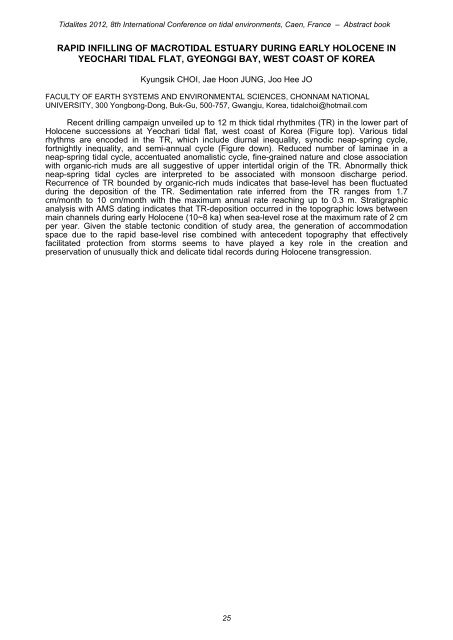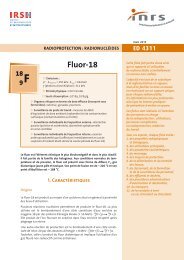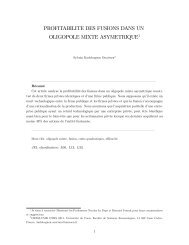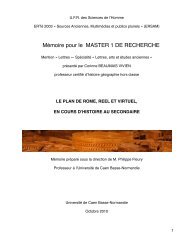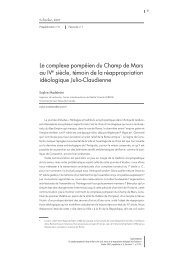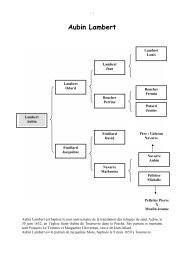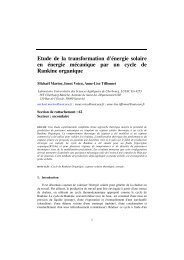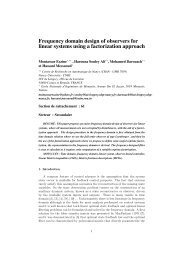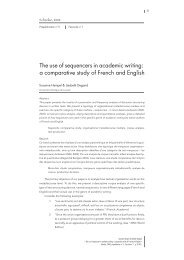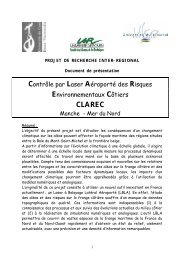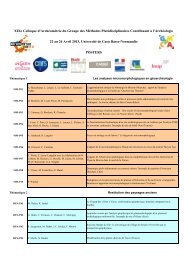programme tuesday, july, 31 - Université de Caen Basse Normandie
programme tuesday, july, 31 - Université de Caen Basse Normandie
programme tuesday, july, 31 - Université de Caen Basse Normandie
You also want an ePaper? Increase the reach of your titles
YUMPU automatically turns print PDFs into web optimized ePapers that Google loves.
Tidalites 2012, 8th International Conference on tidal environments, <strong>Caen</strong>, France – Abstract book<br />
RAPID INFILLING OF MACROTIDAL ESTUARY DURING EARLY HOLOCENE IN<br />
YEOCHARI TIDAL FLAT, GYEONGGI BAY, WEST COAST OF KOREA<br />
Kyungsik CHOI, Jae Hoon JUNG, Joo Hee JO<br />
FACULTY OF EARTH SYSTEMS AND ENVIRONMENTAL SCIENCES, CHONNAM NATIONAL<br />
UNIVERSITY, 300 Yongbong-Dong, Buk-Gu, 500-757, Gwangju, Korea, tidalchoi@hotmail.com<br />
Recent drilling campaign unveiled up to 12 m thick tidal rhythmites (TR) in the lower part of<br />
Holocene successions at Yeochari tidal flat, west coast of Korea (Figure top). Various tidal<br />
rhythms are enco<strong>de</strong>d in the TR, which inclu<strong>de</strong> diurnal inequality, synodic neap-spring cycle,<br />
fortnightly inequality, and semi-annual cycle (Figure down). Reduced number of laminae in a<br />
neap-spring tidal cycle, accentuated anomalistic cycle, fine-grained nature and close association<br />
with organic-rich muds are all suggestive of upper intertidal origin of the TR. Abnormally thick<br />
neap-spring tidal cycles are interpreted to be associated with monsoon discharge period.<br />
Recurrence of TR boun<strong>de</strong>d by organic-rich muds indicates that base-level has been fluctuated<br />
during the <strong>de</strong>position of the TR. Sedimentation rate inferred from the TR ranges from 1.7<br />
cm/month to 10 cm/month with the maximum annual rate reaching up to 0.3 m. Stratigraphic<br />
analysis with AMS dating indicates that TR-<strong>de</strong>position occurred in the topographic lows between<br />
main channels during early Holocene (10~8 ka) when sea-level rose at the maximum rate of 2 cm<br />
per year. Given the stable tectonic condition of study area, the generation of accommodation<br />
space due to the rapid base-level rise combined with antece<strong>de</strong>nt topography that effectively<br />
facilitated protection from storms seems to have played a key role in the creation and<br />
preservation of unusually thick and <strong>de</strong>licate tidal records during Holocene transgression.<br />
25


